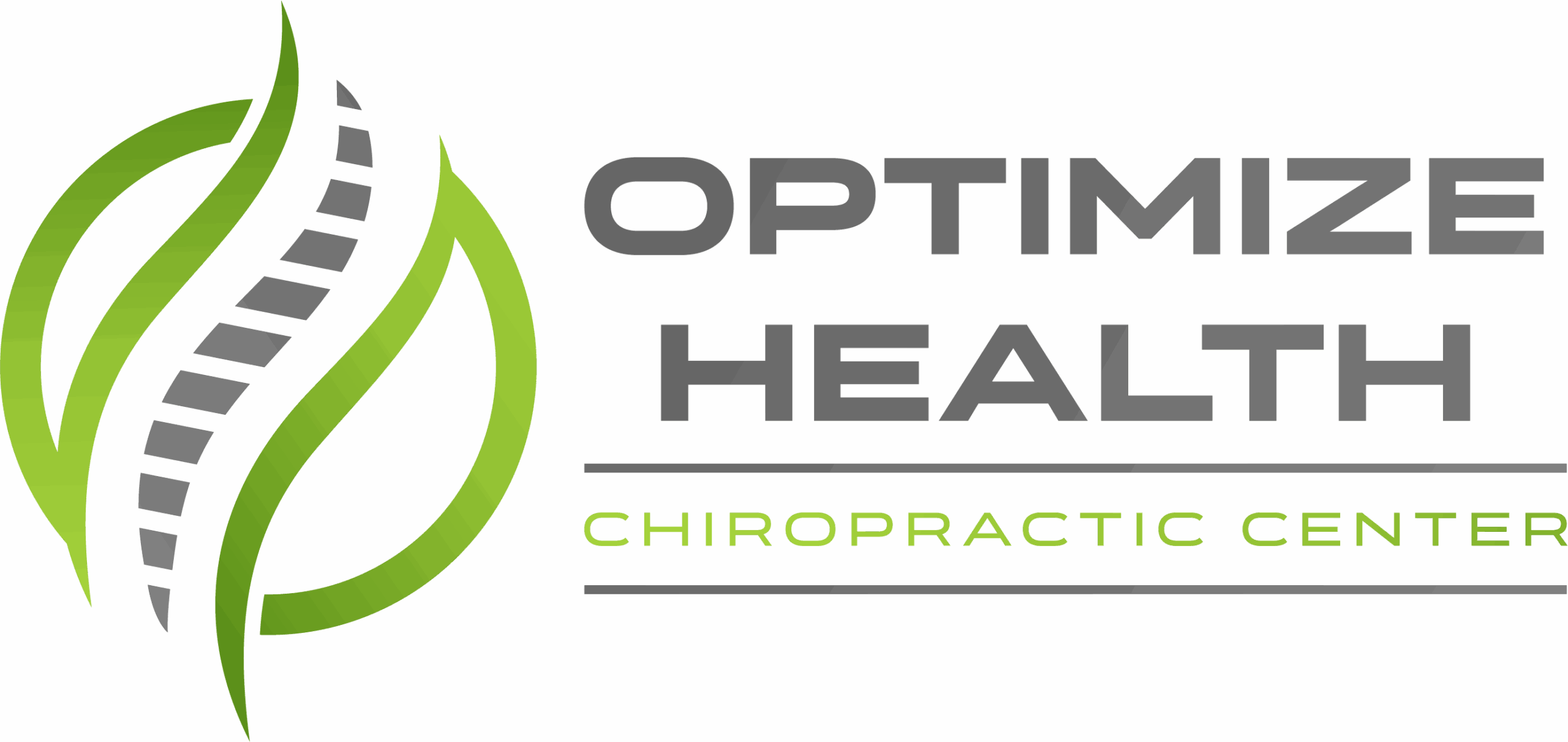If you're experiencing back pain, know that you're not alone in this struggle. Many individuals face similar challenges, and seeking effective relief can often feel daunting. As a local chiropractor, I want to share with you some natural healing techniques that can significantly improve your spinal health and overall well-being.
Chiropractic care is one of the most effective ways to address back pain. It focuses on diagnosing and treating musculoskeletal issues through hands-on adjustments and manipulations. By realigning your spine, we can help relieve pressure on nerves and reduce pain, allowing your body to heal naturally.
In addition to chiropractic adjustments, there are various lifestyle changes and complementary therapies that can support your spinal health. This includes exercises tailored to strengthen your core, proper posture techniques, and ergonomic adjustments to your workspace. Incorporating these practices can enhance the benefits of chiropractic care and promote long-term relief.
Understanding which methods resonate with you is crucial in your journey toward recovery. Together, we can explore the most promising approaches to tackle your back pain and help you regain your comfort. Let's work together to make informed choices that will lead you to a healthier, pain-free life.
Understanding Back Pain
As a local chiropractor, I understand how back pain can feel like a heavy burden, impacting your everyday life and making even simple tasks—like picking up a grocery bag or bending down to tie your shoes—feel daunting.
It's crucial to educate yourself about back pain so that we can work together to address it effectively.
First and foremost, it's important to realize that back pain isn't just one singular problem; it can arise from a multitude of sources. Issues like muscle strains, ligament sprains, herniated discs, and even conditions such as arthritis can all lead to discomfort.
By distinguishing whether your pain is acute or chronic, we can tailor a more effective treatment plan for you. Acute pain usually occurs after an injury and lasts for a short period, while chronic pain lingers for weeks or months and can sometimes be harder to pinpoint.
Another vital aspect we need to consider is posture. Poor posture, whether while sitting, standing, or lifting, can create imbalances in your muscles and lead to significant strain on your back over time.
I encourage you to be mindful of your body positioning, especially during extended periods of sitting or standing.
Furthermore, your lifestyle choices greatly influence your back health. Engaging in regular physical activity can help strengthen your core and back muscles, providing essential support for your spine.
On the flip side, carrying excess weight can put additional stress on your back, exacerbating your pain.
As your chiropractor, I'm here to guide you toward natural healing methods that can alleviate your discomfort and enhance your overall well-being.
Together, we can explore strategies to improve your posture, incorporate beneficial exercises, and develop a personalized plan to manage and reduce your back pain.
Physical Therapy Options
As a local chiropractor, I want to help you understand how chiropractic care can be a transformative option for managing back pain.
Many people are unaware of the benefits of manual therapy, which involves hands-on techniques to alleviate pain and restore function. Additionally, we emphasize strengthening exercises tailored to your needs, which can enhance your overall stability and support your spine.
Posture correction is another crucial aspect of our approach; by teaching you how to align your body properly, we can help prevent further discomfort and promote healing.
Let's explore these natural healing methods together, so you can regain your comfort and mobility in a way that respects your body's natural ability to heal.
Manual Therapy Approaches
As your local chiropractor, I want to share with you the benefits of exploring manual therapy approaches for relieving back pain. These techniques involve gentle, hands-on manipulation and mobilization of your spine and the surrounding muscles. Our goal is to improve your movement and reduce discomfort in a natural and effective way.
One of the foundational techniques we use is spinal manipulation. In this process, I apply controlled force to your joints, which helps restore proper alignment and function. This not only alleviates pressure on your nerves but also significantly reduces pain, allowing you to feel more comfortable in your daily activities.
Another valuable approach is myofascial release, which targets the tension in the connective tissue surrounding your muscles. By relieving this tension, we can enhance your flexibility and promote a deeper sense of relaxation.
We also utilize soft tissue mobilization, a technique that focuses on tight muscles and fascia. This helps improve circulation and decrease stiffness in your body, making it easier for you to move freely.
By combining these manual therapy techniques, we can work together to enhance your overall mobility and provide substantial relief from back pain.
I encourage you to consider chiropractic care as a natural way to heal and find comfort in your life.
Strengthening Exercises Benefits
As a local chiropractor, I want to emphasize the importance of incorporating strengthening exercises into your daily routine for better back health and overall well-being.
These exercises specifically target the muscles that support your spine, enhancing stability and reducing the likelihood of injury. By engaging in muscle-strengthening activities, you're not only building your core strength but also improving your posture and mobility.
When you strengthen your back and abdominal muscles, you may find that everyday tasks become easier and less painful. Strong muscles provide better support for your spine, which can significantly relieve strain during movements.
Think of a strong core as a natural brace for your body—it helps absorb shock and protects your spine from unnecessary stress.
Moreover, engaging in strengthening exercises can boost your endurance, allowing you to stay active for longer without discomfort. This is especially important if you have a job or lifestyle that involves prolonged sitting, as these exercises help counteract the negative effects of inactivity.
Incorporating strengthening exercises into your physical therapy plan can also lead to quicker recovery times from injuries.
With consistent practice, you'll likely notice improvements in your back health, enabling you to lead a more active and fulfilling life.
Posture Correction Techniques
As a local chiropractor, I want to emphasize the importance of strengthening exercises in establishing a solid foundation for good posture, which is vital for your back health.
To begin correcting your posture, it's essential to be mindful of your body alignment throughout your daily activities. When sitting, ensure your feet are flat on the floor and your back is straight. I often recommend considering ergonomic chairs that provide proper support for your lower back.
In addition to strengthening exercises, incorporating stretches into your routine is crucial. Regularly stretching tight muscles, particularly in the chest and hips, can help alleviate tension and promote better alignment.
Many of my patients find practices like yoga or Pilates beneficial, as they emphasize flexibility and core strength, both of which enhance posture.
If you're struggling with posture correction, physical therapy can be an effective option. A skilled therapist can provide personalized exercises and techniques tailored to your specific needs, helping you develop greater body awareness.
They may also utilize modalities like ultrasound or electrical stimulation to relieve pain and improve mobility, allowing you to focus more effectively on maintaining proper posture.
Lastly, I encourage you to adopt good habits, such as taking regular breaks from prolonged sitting and making necessary adjustments to your workspace.
By actively engaging in these posture correction techniques, you can significantly improve your back health and overall well-being.
Home Remedies and Exercises
As a local chiropractor, I understand that many of you may not be familiar with the benefits of chiropractic care and natural healing methods for managing back pain.
It's important to know that home remedies and specific exercises can play a significant role in your recovery process.
Incorporating stretching and strengthening exercises into your daily routine can help provide the support your back needs.
These exercises not only enhance flexibility but also strengthen the muscles that support your spine, potentially alleviating discomfort over time.
Additionally, utilizing heat and cold therapy is a simple yet effective way to find immediate relief from pain.
Heat can help relax tense muscles, while cold therapy can reduce inflammation and numb sharp pain.
I encourage you to explore these techniques as part of your journey to better health.
Together, we can work towards a pain-free lifestyle through natural healing methods.
Stretching and Strengthening Exercises
As a local chiropractor, I want to emphasize the importance of incorporating stretching and strengthening exercises into your daily routine. These practices can significantly alleviate back pain and improve your overall flexibility. The exercises we recommend focus on the muscles that support your spine, which helps reduce tension and enhance your posture.
To begin, gentle stretches like the cat-cow pose or child's pose are excellent choices. These poses can help relieve stiffness and promote better mobility in your back. I suggest holding each stretch for about 20-30 seconds while breathing deeply to facilitate relaxation.
Strengthening your core is also essential for spinal health. Exercises such as planks and bridges engage your abdominal and back muscles, providing the stability necessary for a strong spine. It's important to perform these movements with control, focusing on maintaining good form to prevent any injuries. As your strength develops, you can gradually increase the intensity and duration of these exercises.
Don't overlook the importance of lower body stretches, such as hamstring stretches or lunges. Tight hips can often contribute to discomfort in the back, so addressing this area is crucial. Always listen to your body; if you experience any pain while exercising, please stop immediately.
Consistency is vital for these practices to be effective. I encourage you to dedicate 10-15 minutes each day to these exercises. With time and commitment, you'll likely notice a significant improvement in your back pain and overall flexibility.
Heat and Cold Therapy
As a local chiropractor dedicated to helping you understand natural healing methods, I want to share how heat and cold therapy can be powerful tools in managing back pain right from the comfort of your home.
These techniques not only help alleviate discomfort but also promote healing by reducing inflammation, improving circulation, and relieving muscle tension. Here are some effective methods you can consider:
– Heat Therapy: Applying a heating pad or a warm towel to the affected area for 15-20 minutes can greatly assist in relaxing tight muscles.
It's a simple way to enhance blood flow and reduce stiffness.
- Cold Therapy: For pain relief, consider using an ice pack wrapped in a cloth. Applying it for 15-20 minutes can help numb the area and reduce any swelling that may be contributing to your discomfort.
- Warm Baths: Taking a warm bath can be incredibly soothing. The warmth helps ease aches and promotes better circulation in your back, providing much-needed relief.
- Hot Water Bottles: A tried-and-true method, filling a hot water bottle and placing it on your back can create a comforting source of warmth that relaxes the muscles.
- Contrast Therapy: This technique involves alternating between heat and cold treatments. It can be particularly effective in stimulating circulation and alleviating pain.
Always remember to listen to your body. If you experience any discomfort or if your pain worsens, it's important to stop the treatment and consult with a healthcare professional.
By incorporating these heat and cold techniques into your daily routine, you can find relief and enhance your overall back health.
As your chiropractor, I'm here to support you in your journey toward wellness and natural healing.
Posture and Ergonomics
As a local chiropractor, I want to emphasize how crucial good posture and proper ergonomics are for your overall health, especially when it comes to preventing back pain. When you maintain correct alignment while sitting, standing, or moving, you're able to distribute your weight evenly across your spine and muscles, which significantly reduces strain.
Let's start with your sitting posture, particularly if you find yourself spending long hours at a desk. It's essential to ensure that your feet are flat on the ground, your knees form a right angle, and your back is straight against the chair.
I recommend using a chair that offers support for your lower back, and if needed, consider adding a cushion for extra comfort.
When you're working on a computer, it's important to position your screen at eye level. This helps you avoid leaning forward or slouching, both of which can contribute to discomfort.
Make sure your keyboard and mouse are close enough to you so that you don't have to reach, as this can strain your shoulders and back. Remember to take regular breaks to stretch and change positions—this keeps your muscles engaged and reduces the risk of stiffness.
If you're standing, it's important to distribute your weight evenly across both feet. Try to avoid locking your knees, as this can create tension in your lower back.
And if you ever need to lift something heavy, remember to bend at your knees rather than your waist, and keep the object close to your body to protect your spine.
By being mindful of these ergonomic practices, you can take proactive steps towards better spinal health and overall well-being.
If you have any questions or would like personalized advice, feel free to reach out to me. Your health is worth it!
Alternative Treatments
As a local chiropractor, I often see many patients who are searching for relief from back pain, especially when conventional treatments haven't provided the results they hoped for.
If you're exploring alternative options, I want to introduce you to several effective approaches that can enhance your well-being and help alleviate your discomfort.
Here are some alternative treatments to consider:
- Acupuncture: This ancient technique involves the insertion of fine needles into specific points on the body, which can help reduce pain and encourage the body's natural healing processes.
- Chiropractic Care: At our practice, we focus on aligning the spine and joints through manual adjustments. This method can relieve tension and discomfort, allowing your body to function optimally.
- Massage Therapy: Therapeutic massage isn't just a luxury; it's a powerful tool for easing muscle tension, improving blood circulation, and promoting relaxation, all of which can help you manage pain more effectively.
- Herbal Remedies: Nature offers some wonderful options! Herbs like turmeric and ginger possess anti-inflammatory properties that may assist in reducing pain when consumed in teas or supplements.
- Meditation and Mindfulness: These practices are invaluable for managing stress and altering your perception of pain. Embracing relaxation techniques provides a holistic approach to pain relief.
Before diving into any alternative treatment, it's crucial to consult with a healthcare professional, like myself.
I can help guide you in selecting the best options tailored to your specific needs and ensure that any new treatment aligns with your current health plan.
Exploring these alternatives can empower you on your journey to effectively relieve back pain and enhance your quality of life.
Lifestyle Changes for Prevention
As a local chiropractor, I want to share some valuable insights on how you can effectively manage and prevent back pain through simple lifestyle changes. It's crucial to understand that while chiropractic care can help alleviate pain, adopting certain habits can greatly enhance your overall well-being and help prevent future issues.
One of the best things you can do is incorporate regular exercise into your daily routine. Activities like Pilates or yoga are excellent for strengthening your core muscles, which provide essential support for your spine. Ideally, aim for at least 30 minutes of moderate activity most days of the week. This doesn't have to be daunting—find something you enjoy, and it'll be easier to stick with it!
Paying attention to your posture is another key factor. Whether you're seated at your desk or standing in line, maintaining good alignment can make a significant difference. I recommend using ergonomic furniture that promotes proper posture, and if you find yourself sitting for extended periods, remember to take breaks to stretch and move around.
When lifting heavy objects, always bend your knees and keep the items close to your body to avoid straining your back.
Maintaining a healthy weight is also vital in preventing back pain. Extra weight puts added pressure on your spine, so focus on a balanced diet that includes plenty of fruits, vegetables, lean proteins, and whole grains.
Don't forget the importance of hydration—drinking enough water keeps your spinal discs hydrated and functioning optimally.
Lastly, prioritize the quality of your sleep. Aim for 7-9 hours of restful sleep each night on a supportive mattress and with pillows that encourage proper spinal alignment.
By integrating these lifestyle changes into your routine, you can significantly lower your risk of experiencing back pain in the future and enhance your overall quality of life.
Conclusion
As a local chiropractor, I want to emphasize that effectively managing back pain involves a holistic approach tailored to your unique needs. One of the key components is chiropractic care, which focuses on spinal alignment and overall body mechanics. This can significantly alleviate discomfort and improve your mobility.
In addition to chiropractic adjustments, I encourage you to explore physical therapy options that can complement your treatment. Incorporating specific home remedies and exercises into your daily routine can also provide relief and enhance your recovery.
Paying attention to your posture and ergonomics is crucial; small adjustments in how you sit, stand, and move can make a world of difference. Don't underestimate the power of alternative treatments, such as massage therapy or acupuncture, which can further support your healing process.
Finally, consider making lifestyle changes that promote overall wellness, as these are vital in preventing future back pain. By embracing these techniques, you can improve your back health and enjoy a more active, pain-free life. As your chiropractor, I'm here to guide you on this journey to better health!



